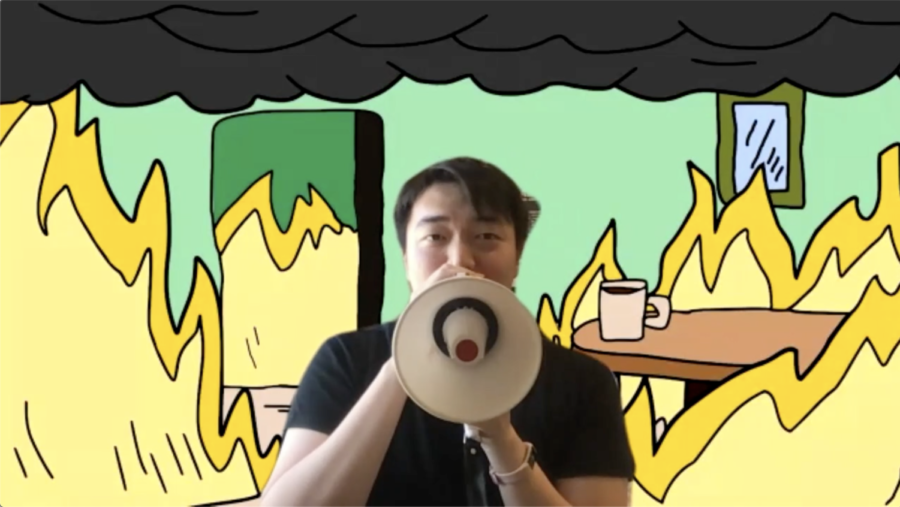Deaths due to alcohol, drug abuse, or suicide—otherwise known as “deaths of despair”—occurred more frequently during the pandemic, according to a working paper first submitted to the National Bureau of Economic Research in December 2020 by Casey Mulligan, a UChicago economist and the chief economist of the Council of Economic Advisors during the Trump administration. The preliminary paper also noted a rapid rise in fatal opioid overdoses in Cook County since March 2020.
In his paper, “Deaths of Despair and the Incidence of Excess Mortality in 2020,” Mulligan pointed out that the number of deaths in March 2020 exceeded “what would have occurred if official COVID deaths were combined with a normal number of deaths from other causes.” He further claims certain details of these additional mortalities suggests that they are deaths of despair.
Government lockdowns and regulations restricting movement reduced opportunities to spend money as stimulus checks were distributed. Mulligan has also suggested on Twitter that stimulus payments contributed the increase in deaths of despair, clarifying in an email to The Maroon that this link is purely “anecdotal and theoretical.”
While the rise in rate of deaths of despair has been confirmed by multiple sources, Mulligan’s paper has yet to be peer-reviewed. In past recessions, higher rates of unemployment were not alleviated by direct stimulus to individuals to replace or supplement their lost income.
Mulligan believes that COVID regulations, such as stay-at-home orders and mandates on keeping businesses closed, prompted people to spend money on things that could be used while in isolation, including drugs and alcohol. Princeton University economists Anne Case and Angus Deaton report that deaths of despair are often the culmination of years of drug and alcohol abuse and suicidal thoughts, and both previously stated that a rise in deaths of despair after the summer of 2020 was unlikely. Mulligan strongly disagrees with their conclusions, especially their assertion that projects like his were “pet theories about the fatal dangers of quarantine.” He sees an intersection between these deaths of despair and the ongoing opioid crisis, about which he has authored several other papers.
Mulligan’s work is not without controversy. Case and Deaton were in opposition to any argument that placed the placed the blame for the rise of deaths of despair on responses to the pandemic, stating that the pandemic was not the main cause of the rise in deaths of despair, but rather the continued spread of fentanyl across the US. On this point, Mulligan does not yet have a conclusive answer.
According to data from the Cook County Medical Examiner’s Office that was compiled in Mulligan’s recent paper, the opioid crisis was exacerbated by the pandemic. In 2019, fatal opioid overdoses numbered in the hundreds every month; in 2020, this increased to the thousands in Cook County as strict lockdowns were being implemented across the country. He told The Maroon that despite the well-documented spate of fentanyl overdoses and abuse, the presence of the drug both legally (such as administered by an anesthesiologist or through prescription) and illegally (such as manufactured illegally abroad for eventual sale on the street)—like many other common pain-relieving opioids—has made fentanyl very hard to root out as a factor entirely.
“So you have these two facts, and these facts are like bookends: When anesthesiologists administer fentanyl, it’s super safe,” Mulligan said. “When, say, a user who is not medically trained uses it, they say it’s much more dangerous.”
He added that fentanyl’s low production cost and the ineffectiveness of attempts to curtail its recreational use have also contributed to the jump in “deaths of despair” and to the opioid epidemic as a whole.
However, Mulligan’s prognosis is not all doom and gloom. Populations in cities and states eventually adapt to epidemics, and fentanyl has not proven to be an exception to this rule.
“If you’re looking at national averages, you’re going to be averaging some markets where they’ve got used to fentanyl and the deaths are coming down, and other places where they’re just getting it for the first time—maybe they’ll learn from the others. So that could be a factor in bringing the deaths down and giving people other things to spend their money on,” he said.




















